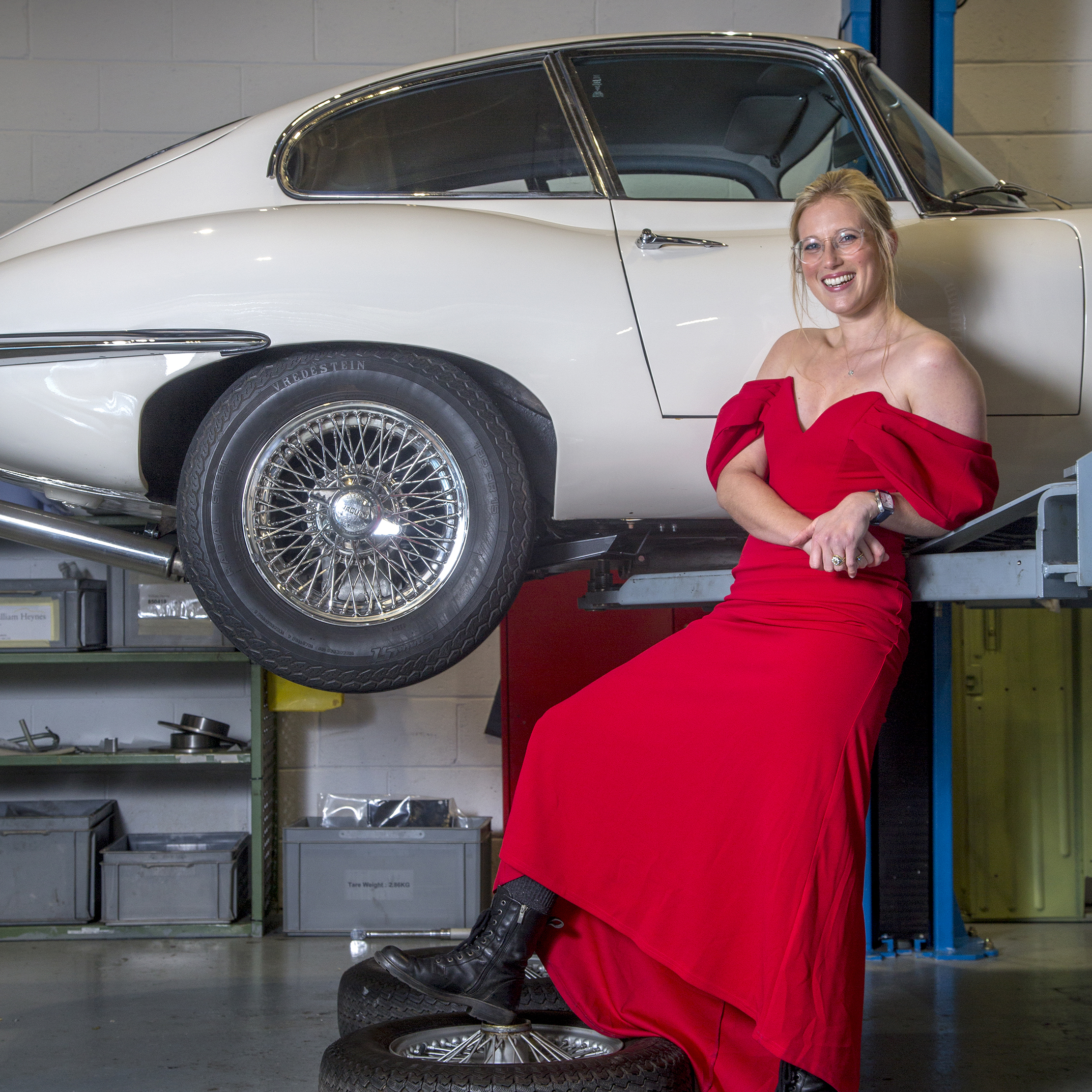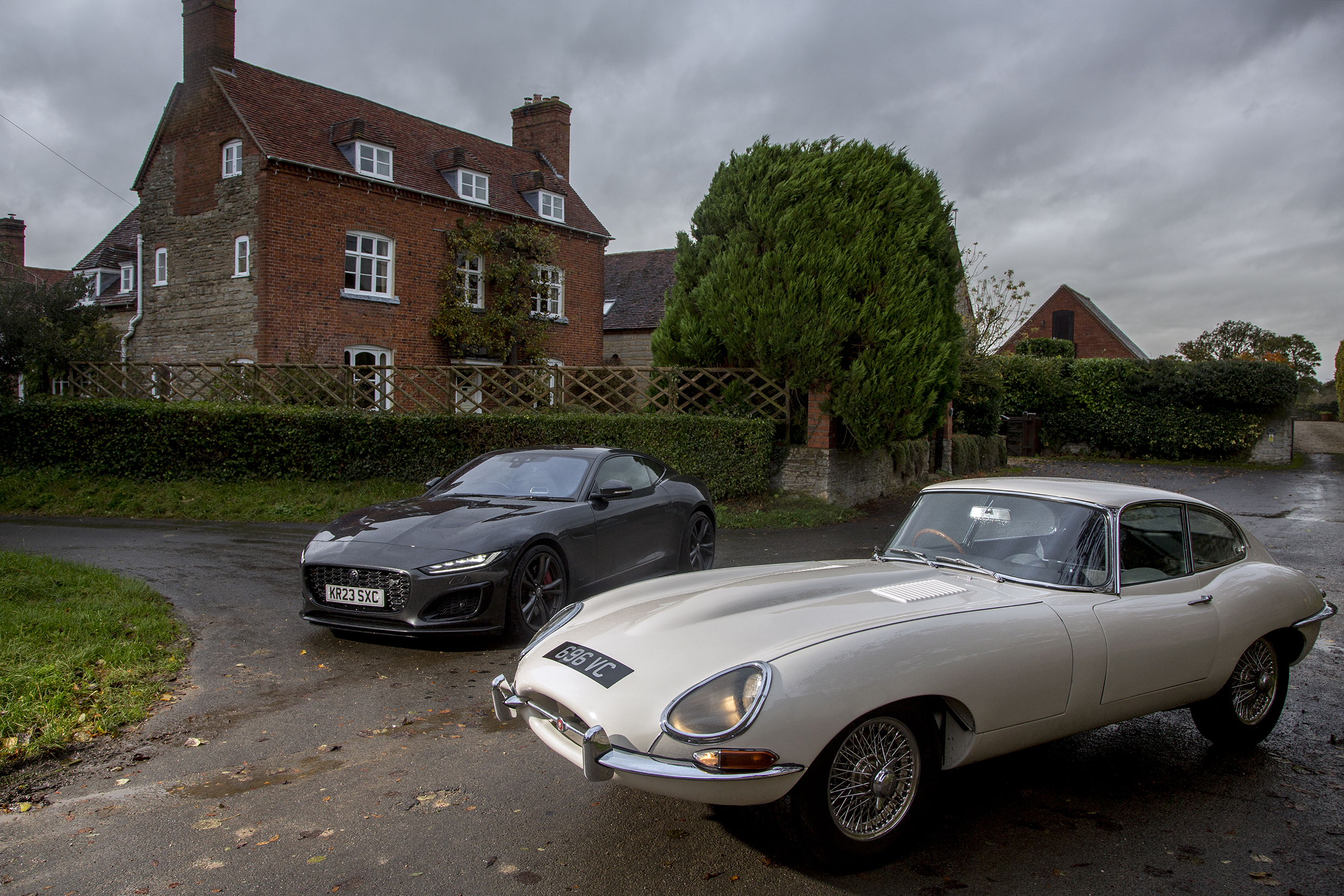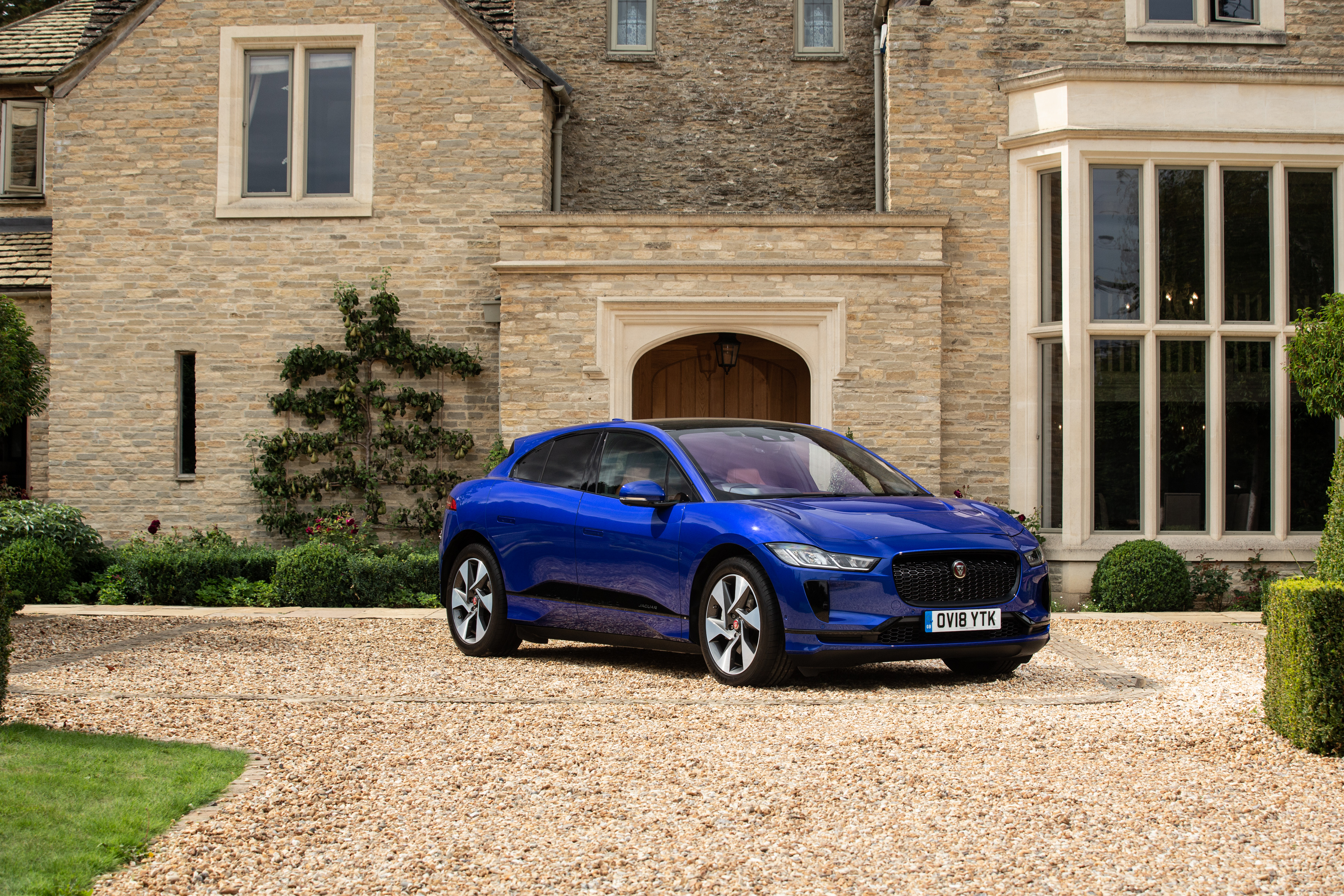The 'most beautiful car ever made' makes its debut on Country Life Frontispiece page alongside photographer Amy Shore
Automotive photographer Amy Shore is the star of the Frontispiece page in this week's Country Life — and where better to take the pictures than the garage specialising in classic Jaguars which she helped to start. Rosie Paterson went along.


It’s fair to say that Amy Shore absolutely loves cars — especially classic Jaguars.
She also knows how to photograph them: she’s a hugely sought-after automotive and lifestyle photographer who you might well have spotted, camera in hand, at the Goodwood Revival. Or the Monaco Historique GP. Or the GP Ice Race. This week, though, she’s appeared on the other side of the camera as the star of the Country Life Frontispiece page in the November 15, 2023, issue.
As for the Jaguars? A couple of years ago, Amy co-founded a garage with her husband, William Heynes, specialising in restoring classic Jaguars — and particularly E-Types.
Petrol runs in the Heynes family’s veins: William’s late grandfather was the legendary Bill Heynes, Jaguar’s former chief engineer and technical director, who was responsible for the design and engineering of all Jaguar cars from 1935 to 1970.
Amongst other things, Bill developed the XK engine — it was in production for more than 40 years making it arguably one of the most successful engine designs in history — and persuaded Jaguar founder Sir William Lyons to enter Le Mans. Jaguar did rather well, winning five times.
The E-Type has a starry history all of its own: driving titans Mike Parkes and Bruce McLaren won racing victories whilst behind the wheel at tracks including Goodwood, Silverstone and Brands Hatch; Enzo Ferrari is rumoured to have described it as ‘the most beautiful car ever made’; it made its film debut in none other than Peter Collinson’s seminal 1969 film, The Italian Job. The fact that an E-Type only appeared in a single James Bond film (Thunderball, 1965) really beggars belief.
Earlier this month, the Country Life team journeyed north to the William Heynes workshop to photograph Amy — despite Storm Ciarán’s best attempts to quell our progress. Her co-stars for the day? A cream-coloured E-Type coupé from 1963 and a very modern-day Carpathian grey F-Type — with a 5.0-litre V8 engine.
Exquisite houses, the beauty of Nature, and how to get the most from your life, straight to your inbox.

Jaguar may no longer be British-owned, but it’s still responsible for engineering cars that deserve a hallowed space in the pantheon of all-time great automobiles. Its modern cars are also much-lauded and inspiring: Country Life’s Editor-in-Chief, Mark Hedges, rounded out his review of the I-Pace with the line: ‘This vehicle offers a truly wonderful driving experience in a beautifully thought-out interior. If I had a spare £65,000, I’d buy one tomorrow. It really is that good.’
Things have moved on enormously, of course, and the 2023 Jaguar F-Type is a brilliant brute in comparison to the E-Type, with a stonkingly powerful engine not so much hidden away underneath the long bonnet as restrained. It boasts its own brand of elegance though, punching through the gears quickly and, more importantly, smoothly, to reach 60mph in 3.5 seconds. Its maximum speed is more than triple that, at 186mph. The biggest insult a purist could hurl at it? It’s possibly a little too easy to drive — and that isn’t really an insult at all.

Though they may be separated by some six decades, there are similarities between the E-Type and F-Type: put the two models side-by-side and they are clearly related, even if today's car gives more of a nod towards the E-Type than trying to be a straight out 1960s replica. From the elongated bonnet to the curved lines, both cars have a sense of movement even when stationary — something that’s missing from so many of Jaguar’s competitor’s designs. The similarities run more than skin-deep though because the E-Type doesn’t exactly flag behind despite its age, boasting a top speed of 153mph. On the shoot, we had to make a concerted effort to keep up with it as it bounced down leaf-strewn countryside lanes.
Amy and William specialise in the Series 1 E-Type — only 8,000 were ever made — but they’ve come across and restored Series 2 and 3 cars too. There are five total in and around the workshop during our visit, a well as a lonely-looking bonnet in the far corner. One is very special indeed, resplendent in an opalescent shade of French navy — an effect that was achieved by mixing crushed diamonds into the paint.

There will be plenty ready to mourn the F-Type when production comes to a halt next year, after a decade of production — four years shy of the E-Type's 14-year lifespan. Its demise — sadly — will also mark the end of 75 years of combustion-engined Jaguar sports cars, a lineage that stretches all the way back to Bill Heynes himself.
The Jaguar F-Type R 75 5.0 litre V8 575PS Supercharged Petrol (Automatic) All Wheel Drive, pictured above, costs £111,395; other 2024 models from £60,245. The cream-coloured E-Type is owned by The Car Crowd which offers customers the chance to purchase fractional shares in classic- and supercars.
Amy Shore’s photographs and limited edition prints are available to purchase here; and you can find out more about William Heynes Ltd garage here.

Credit: Richard Parsons
The Jaguar I-Pace: 'If I had a spare £65,000, I’d buy one tomorrow. It really is that good'
That Jaguar’s all-electric I-Pace is the 2019 World Car of the Year comes as no surprise to Mark Hedges.

Jaguar F-Type R AWD: car review
Jaguar’s latest all-wheel-drive F-type is not only good-looking, it’s also the perfect fly-fishing wagon, purrs Charles Rangeley-Wilson.

What it was like to ride the last steam train in Britain, by the passengers of the 'Fifteen Guinea Special'
It's exactly 50 years since the last passenger steam train in Britain made its way from Liverpool to Carlisle and

Jaguar XJ R-Sport review: 'The non-pareil for comfort and elegance'
On an annual pilgrimage to Scotland in pursuit of silver salmon, Richard Parker enjoys the many charms of the Jaguar
Rosie is Country Life's Digital Content Director & Travel Editor. She joined the team in July 2014 — following a brief stint in the art world. In 2022, she edited the magazine's special Queen's Platinum Jubilee issue and coordinated Country Life's own 125 birthday celebrations. She has also been invited to judge a travel media award and chaired live discussions on the London property market, sustainability and luxury travel trends. Rosie studied Art History at university and, beyond Country Life, has written for Mr & Mrs Smith and The Gentleman's Journal, among others. The rest of the office likes to joke that she splits her time between Claridge’s, Devon and the Maldives.
